A quick lesson in geography: The Tuamotus are one of five island groups that comprise French Polynesia (the other four being the Marquesas, Gambiers, Australs, and Societies). Their 78 atolls make them the largest atoll chain in the world, and although their total land mass is only 885 square kilometers (342 square miles) they are spread over an area of the Pacific Ocean that is roughly the size of Western Europe. They lie along the Eastern Fracture Zone, an oceanic fault line from the Tuamotus to South America, where certain parts are at sea level while others are several thousands of meters above or below sea level. Each of these motus (Polynesian for atolls) are essentially a bowl of salt water surrounded by coral reefs and sand bars. Some have navigable passes, while others are simply too challenging to attempt in a sailboat. A total of 16,000 residents live across the Tuamotus’ 78 atolls.
I was not planning to visit the Tuamotus, as the mere thought of them sent a chill down my spine. There are near-weekly reports of boats running aground on coral reefs or otherwise getting into trouble entering and exiting the challenging passes, and this is with multiple crew on board keeping watch for coral heads (or “bommies” as they are known in the cruiser community). Doing it as a singlehander put me at a disadvantage relative to other boats, and I was very apprehensive from the beginning.
At Nuku Hiva (in the Marquesas), I spent a lot of time discussing the “where next” question with other cruisers. A plan began to emerge with my new friends aboard SV Wild Iris, Mark and Lisa: we would travel together for the three-day passage from Nuku Hiva to Raroia in the Tuamotus. There, I would follow Wild Iris through the challenging entrance to the atoll, and stay a few boat lengths behind as we navigated the coral bommies inside the lagoon en route to the eastern “Kon Tiki” anchorage. There was near daily discussion of the extreme currents we could expect through the pass, for which there were no official current tables. We’d need to extrapolate tidal currents using an excel file created by another cruiser, and even these calculations were often inaccurate. Entering a pass with a 5 knot opposing current could spell trouble if an engine failed or a prop was fouled. Timing it correctly was of the essence.
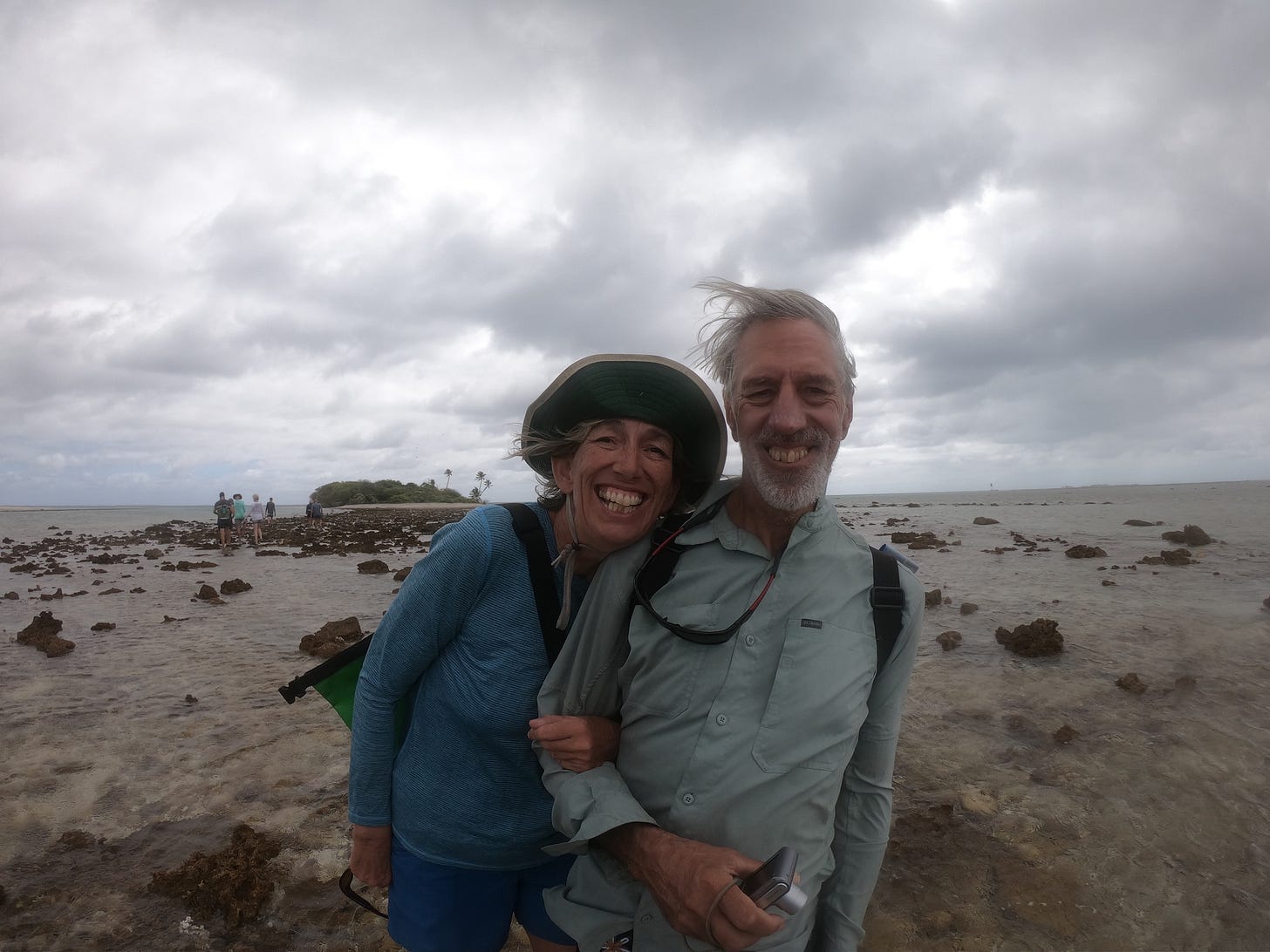
As my stay in the Marquesas came to a close, I provisioned the boat for 4 weeks’ worth of food, knowing that there wouldn’t be much in the Tuamotus, save for fish, coconuts, and whatever an occasional supply ship or local traders brought in from the neighboring islands. To travel to the Tuamotus is to expect and want time away from the din of city noise and the pace of urban life, in a mostly remote setting.
With three other boats including Wild Iris, I headed out into an early May night with 20-25 knots on the port beam (left side of the boat), with occasional gusts -seemingly always at night- to 30 knots. Wind River travels fast enough on her smaller staysail and a reefed main, and I elected to keep this configuration for much of the trip. This was my longest singlehanded passage to date without stops (approximately 450 nautical miles over 3 days), and it was thankfully uneventful. Our sailboat pack was within 10 miles of one another, and checkins on the VHF radio provided comfort and reassurance that I was not alone.
We timed our arrival at Raroia for the morning shortly before slack current. At 11:40am Mark deftly steered Wild Iris through the pass while Lisa spotted for bommies and other obstructions, and I followed 5 boat lengths behind. Halfway through the entrance, it seemed as though they came to a standstill and I was worried they’d run aground on a sandbar. Mark radioed that the current was in excess of 5 knots outgoing (ie. not slack as the current estimator had predicted), and he had to throttle up his engine to 2500 RPMs to claw forward at 1 knot; normally we’d be running at 1500-2000 RPM’s and doing 5-6 knots. I did the same and after a few tense minutes we were clear of the worst of the current. We motored east, dodging numerous bommies inside the atoll, and an hour later arrived at the Raroia’s eastern end.
We spent 5 days at the Kon Tiki anchorage. Here we met fishermen who served us coconuts and dried salted fish, and I saw hermit crabs for the first time. We met other boat crews at the anchorage and had late afternoon get-togethers on the nearby sandbars. We swam around the coral (not very healthy I was told), and tried to get coconuts off trees (not very successfully).
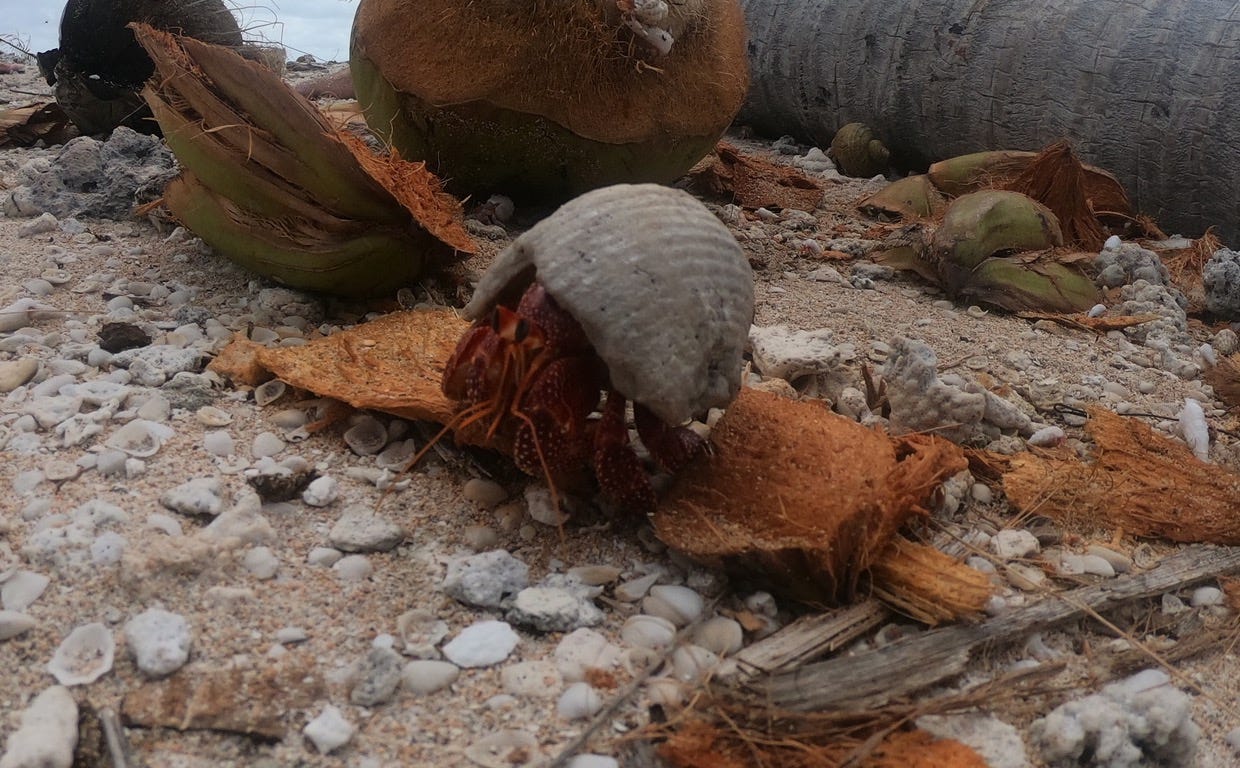
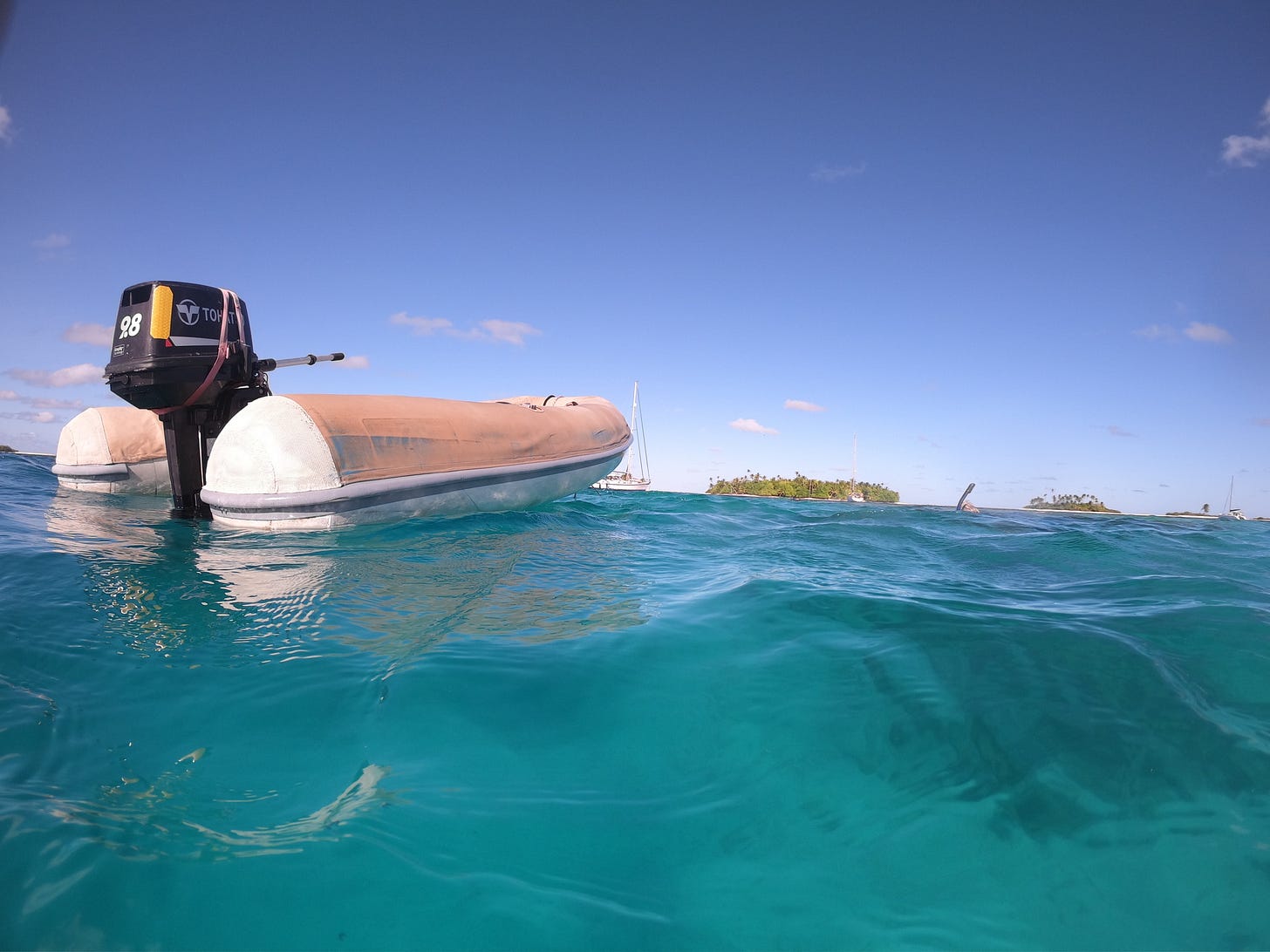
One afternoon, we visited the Kon Tiki memorial. In 1947, the Norwegian explorer and writer Thor Heyerdahl built a sailing raft in Peru and sailed it to Polynesia to test the theory that Polynesians originated in South America and followed the winds west to the islands of the Pacific. Heyerdahl and crew spend 101 days at sea, eventually crashing onto the reef a few meters from us; all successfully returned home.
A few days later we headed to Raroia’s north anchorage. Fishermen occasionally stopped by offering their fresh catch, and Mark, Lisa and I shared a yellowtail tuna, made into poke bowls and sashimi. Storm systems were passing nearby and this delayed by six days my plan to depart the atoll and explore other ones. During the wait, our cruisers group went ashore for hikes and bonfires, and there were frequent get-togethers on each others’ boats.
I organized a VHF “net” where all cruisers at the anchorage could chat about the next destination, when to leave, prevailing weather conditions and estimates of current through the pass. Based on the advice of others on the net much smarter than me, I decided to leave Raroia for Fakarava (another atoll) with Dave and Denise on SV De Novo; others decided go to Makemo and Tahanea.
And just like that, the first step of my “Tuamotus Two-Step” was coming to a close. Fakarava would be the second step; more about it in the next post.






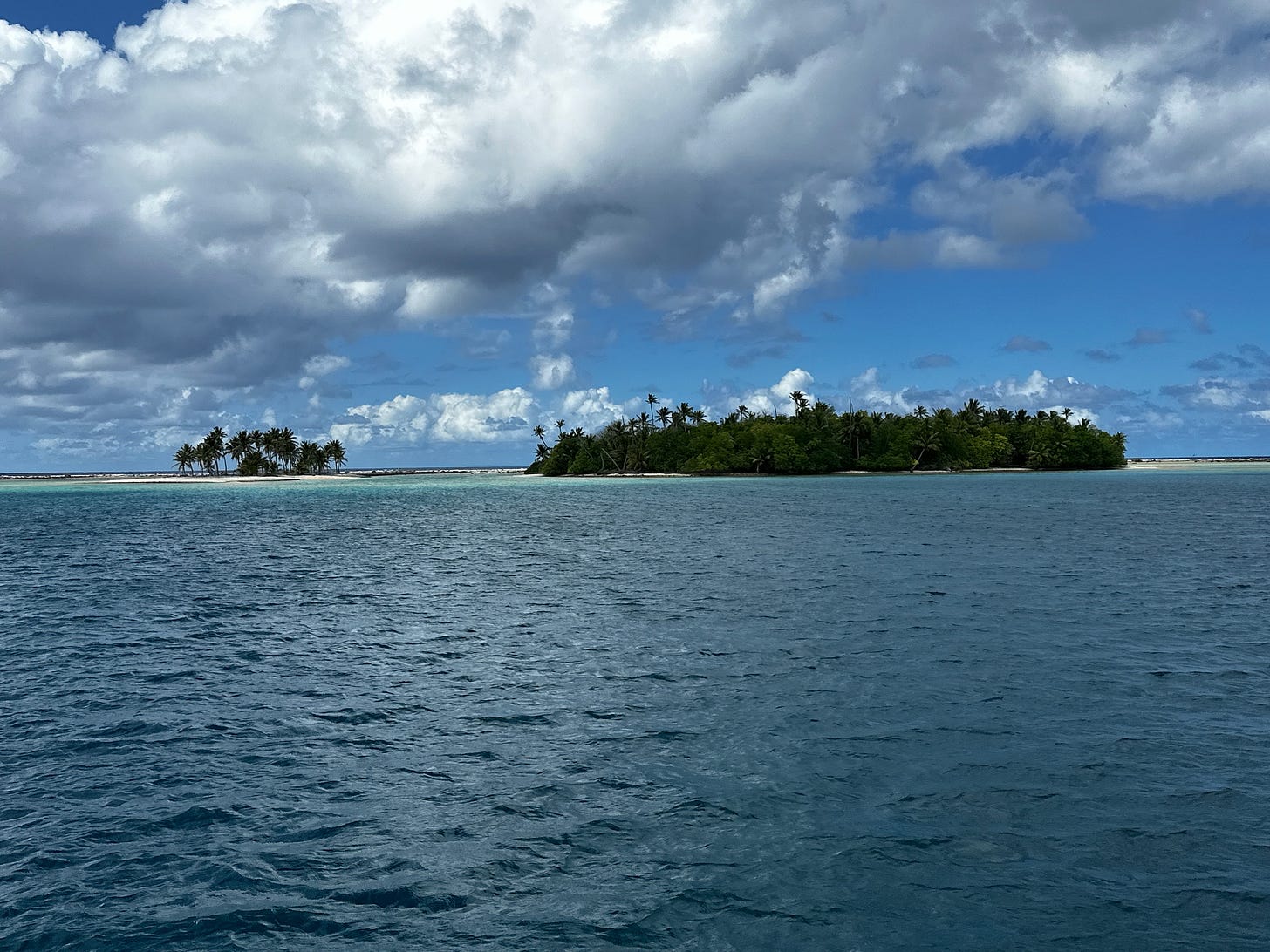
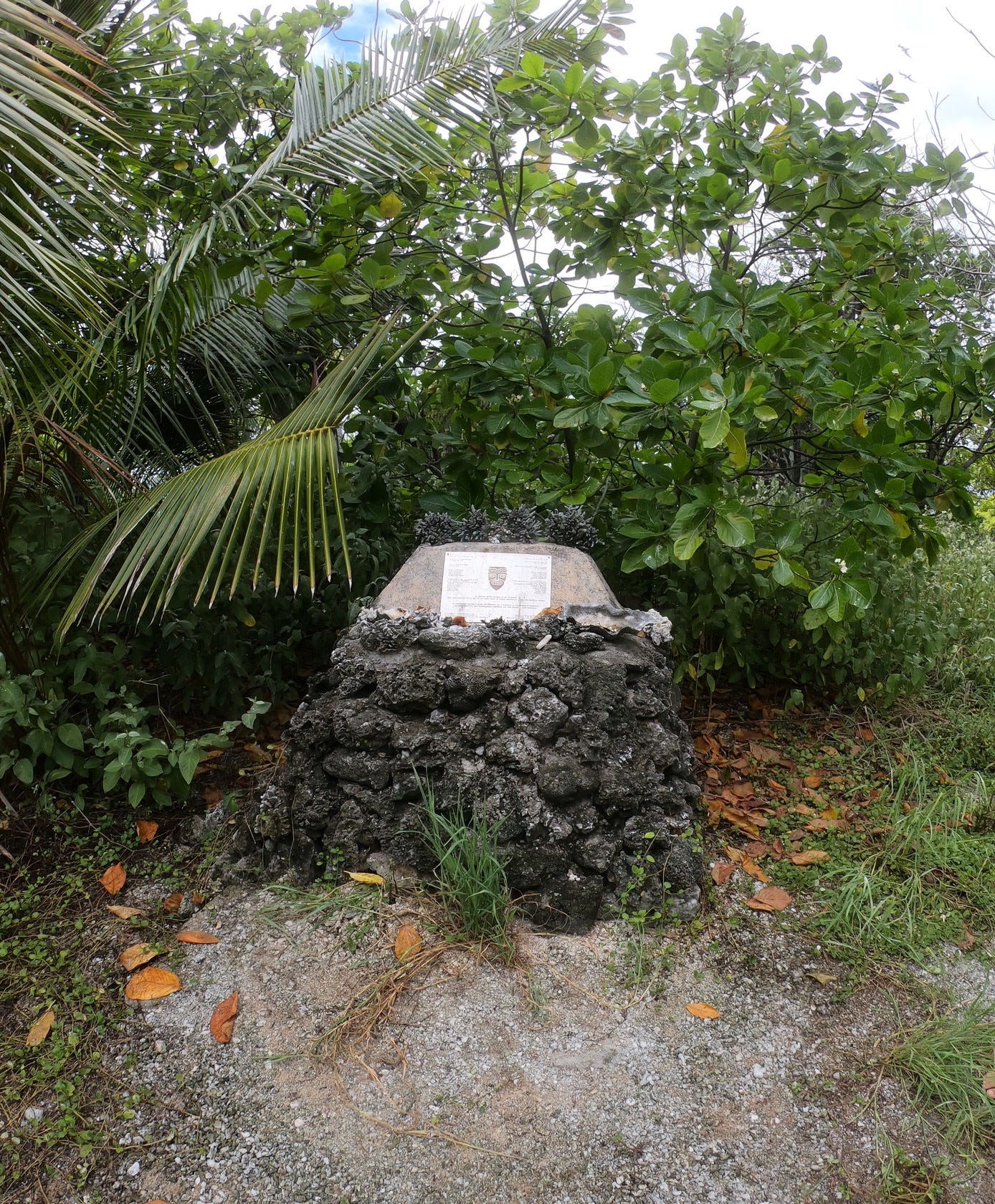
The Tuamotus were our favorite atolls on our circumnavigation. The interiors were not charted, so we put Margie in a bosun's chair and hauled her up to the second spreader as we navigated the "bomies." We moved around, inside the atolls between 10am and 2pm since the overhead sun made seeing the coral heads much easier. Margie and I wore "Marriage Savers" which are the remote headphones which allow you to talk "hands free." She would give me course changes, such at 10 degrees to starboard.
If you went to the windward side of the Atoll, you could drop your anchor at the reef, drift backwards and watch the high pacific swells crash onto the reef and dissolve into only "frothy bubbles" as they reach your boat. The Tuamotus are a magical place.
Raffi, what a great adventure teaming with your new friends, Mark and Lisa. That must have been scary at times ended up great. I really admire your attitude and ability to continue on this fantastic trip. We think of you often.
Rich